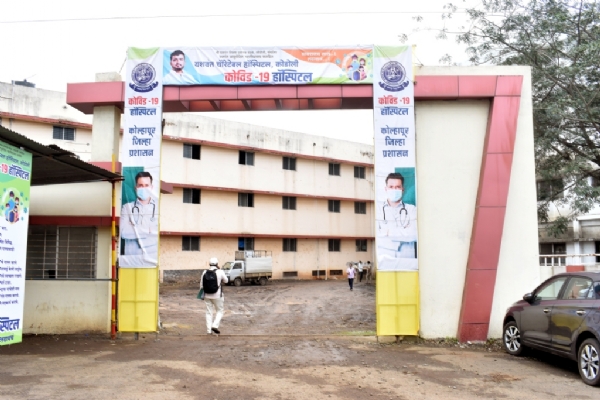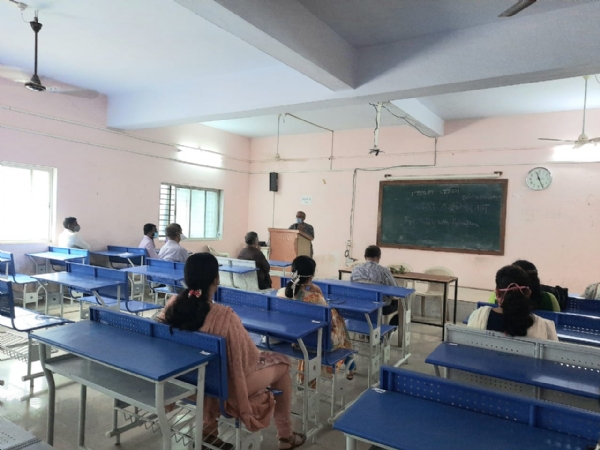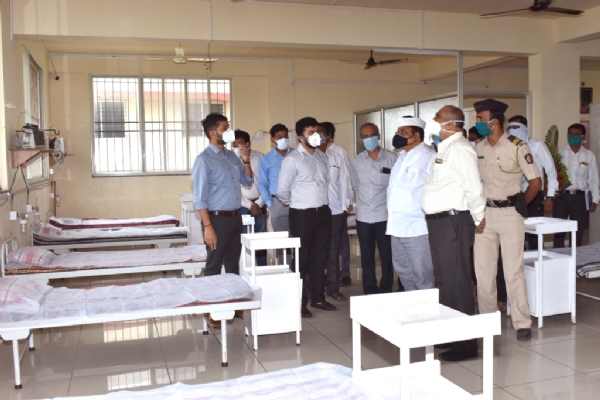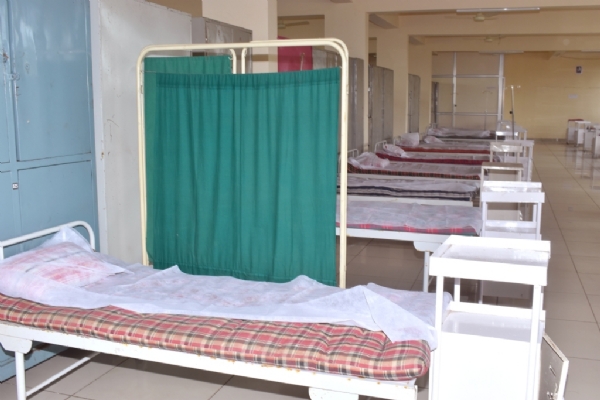'We Should Fight Together', Says Corona Warrior Dr. Suryakiran Wagh
Total Views | 244
The year 2020 has changed the definition of heroes. Thanks to this Chinese virus ‘COVID-19’ which has finally made us realize who ‘real-life’ heroes are. They’re definitely not the ones who wear fancy superhero costumes or who have any superpowers , rather they are the ones who are wearing PPE and hustling in ICU and hospital ward doors. Working strenuous shifts and skipping meals, they continue to perform their duty without even thinking about themselves as the fear of coronavirus lurks right behind them. These real heroes around the world are facing an unprecedented workload in overstretched health facilities, and with no end in sight.

Dr. Suryakiran Wagh is one such hero who’s working day in and day out in COVID center in Kolhapur, a city with the maximum number of COVID-19 infections. During COVID-19, when the whole world was in fear due to this virus, Dr. Suryakiran Wagh came forward and started the COVID center to help the people. Since the global outbreak of COVID-19, Dr. Wagh and his team have worked countless hours to save people. Without any support from villagers they started running COVID center in Yashwant Dharmartha Hospital, Kodoli village, in Kolhapur district, Maharashtra. It was not definitely an easy job for him but he did not stop there. He not only ran COVID center but he also monitored the team who provided kits to the villagers who were quarantined at home.

Dr. Wagh is an Ayurvedic doctor who is also pursuing his Ph.D. in Ayurveda from Vadodara-based College. He is also a member of Central Council of Indian Medicine (CCIM). He belongs to the Satara district. He has been involved in various social work activities since many decades. Also he is a dedicated Swayamsevak of Rashtriya Swayamsevak Sangh. He is the Sanghchalak of RSS Kolhapur district. This is not the first time that he came forward to help the people. Earlier, he also monitored Sangh's work during last year when an unexpected aggressive flood took over several areas across the Kolhapur and Sangli district.
1) Before starting the interview, can you please give the information about the COVID center you have been running for the last few months?

We started the COVID Center in mid-March after Ayush Department and the government gave our doctors and nurses proper training about the PPE kits and treatment of COVID-19. Initially, this was the only non-Covid hospital in the Panhala taluka during Covid 19 lockdown. Although the number of cases started to increase in late March, the district deputy collector requested the hospital authorities to convert the hospital into a dedicated Covid Hospital and transfer your non-Covid patients to another hospital. However, instead of converting a hospital into a full-fledged covid center, we decided to convert one section of the hospital considering the non-covid patients. Because it was not possible to transfer all patients to the other hospital in one go. Following this, the government permitted our hospital to convert into COVID center.
2) Did the rural people support this idea?
No! Initially, local villegers opposed the authority when they came to know about the covid center. They were right as they were concerned about their village and themselves. Although they came to know the importance of the center after they felt the need for covid center when they started to face bed shortages in other hospitals. Since then, they started supporting the COVID center.
3) What challenges did you face while running the covid center?
We did not face any challenges as such, but wearing PPEs while doing duty was the most difficult part. It was a new experience for us and initially it was very hard to work for 6 hours wearing the PPE kit. Sometimes we have to wear them for more than 8 hours. It felt suffocating in the PPEs and because of the heat, sweat kept dripping down the face, which you can’t wipe away. The challenges and difficulties of donning the equipment from head to toe and staying in it for hours also involved not drinking water or going to the washroom for at least 6-8 hours.
4) Did covid center had a shortage of beds or ventilators?

In early April, we did not have any type of shortage, but after cases started to surge in the district we started to face the shortage for a ventilator and oxygenated beds. In the beginning, we organised 100 oxygenated beds but at that time, we only used 30 beds as there were fewer cases. However, the situation changed soon later when the total number of active coronavirus cases started rising day by day in the district after which we increased the number of beds for Covid-19 patients and as per the need, we bought 3 new ventilators.
5) What medications are being used to treat COVID-19?
We gave the integrated treatment to them following both Ayush and ICM's guidelines. We used both Ayurvedic and Allopathy to treat the people. We also gave them Ayush Kadha along with HCQ and other allopathy medicines. However, the District health administration refused our proposal as ICMR didn't mention Ayurvedic kadha in their circular, but when we explained and showed them the Ayush Ministry's protocol, they agreed to it. We also pass on the protocol to all covid centers in Kolhapur.
6) Does Ayurveda have a concept like an epidemic? And is there any cure for it?
There is no term for Epidemiology in Ayurveda, but the principles were described piecemeal when it was compiled, analysed, and interpreted the same as a modern theory of Epidemiology. All pandemic & epidemic diseases form the modern sciences are included under Ayurvedic ‘Janapadodhwamsa'.
The word ‘Janapadodhwamsa’ comprises two words Janapada (large population) & Udhvamsa (destruction) which means the diseases affecting & causing damage to a large number of people. Factors which are familiar to the people under a particular community like air (Vayu), water (Jala), habitat (Desha) and seasons (Kala), Sinful acts (Adharma) in the form of war, further, in Ayurveda, there is a concept of illnesses caused by causes, which cannot be controlled by human intelligence (Daivabala Pravrutta Vyadhi). It includes contagious (Sarsargaja) & Infectious (Upsargaja) diseases which indicate that certain conditions can be transferred directly from an infected person to a healthy person. Deranged air (Vayu), water (Jala), habitat (Desha), and seasons (Kala) are those common factors of all individuals in a community responsible for diseases that cause mass destruction of people.
There is a treatment for that like Purification of Air, Purification of Water (Jala) Rasayan (Rejuvenation) and Shodhan (detoxification) treatment. Treatment for the recent COVID-19 pandemic can be found as Hetuviparit Chikitsa & Vyadhi Viparita Chikitsa in the ancient Ayurveda.
7) What is your opinion on the dispute between IMA and Ayurveda?
This epidemic was new to Allopathy as well as Ayurveda. They didn't know about the treatment and pathogenesis of Coronavirus disease in the initial months. This was an experiment for both of them. That's why everyone is trying to find the proper treatment to cure this virus. We are also trying to find a cure, just like them. When we find some Ayurvedic medicines for Corona then IMA should appreciate that. They have to understand that without scientific evidence AYUSH will never recommend medicine and Kadha to the people. It is common sense.
Right now, when 10 people are stuck in the jungle and they want to reach the same destination then all ten have to find a way and whoever finds the way, they should guide the other 9 people to reach the destination. Just like the story, whoever would find proper medicine to treat the covid patients with scientific evidence should be allowed to use it on patients.
8) The recovery rate in India is very good, and according to the data based on the website of the Ministry of AYUSH, about 67.8% of people who have overcome corona have been treated according to the protocol given by the Ministry of AYUSH, so why is it so difficult for IMA to accept the protocol of the Ministry of AYUSH?
Just like I said, this is common sense. Without scientific evidence AYUSH will never recommend medicines to the people. However, when Indian Medical Association (IMA) recently made a strong objection against the Union Health Ministry, they just assumed that Ayush has no data to prove themselves. They misjudged because Ayurveda doesn't have the habit to store data and records. However, this time every covid center has stored the data of the treatment. All COVID centers who are following the Ayush protocol, have stored all data about the patients and quarantined people who were gaven Ayurvedic Kadha during the treatment. They have also storeddata of migrant workers to whom they have given Ayurvedic Kadha and turmeric milk during quarantined time.
IMA should also notice that before AYUSH released its guidelines people had already started using Kadha, Chyawanprash, and turmeric milk. According to a very famous Chyawanprash making company's report, Chyawanprash sales jumped 4 times due to coronavirus during the pandemic period. People seek Ayurveda-based interventions for boosting their immunity. So now IMA has no option left but to accept their mistake. They have to accept the data and AYUSH protocol. They can't just overlook data and people.
9) According to a new advisory released by the WHO, both HCQ and Remdesivir are not effective on covid, but now that any modern medicine is unable to treat covid, what do you think about Ayurveda and modern medicine working together?

We can't say that HCQ and remdesivir are not effective on COVID patients, the drug has been beneficial in bettering the patients’ health. The drug has yielded good results in treating severe COVID-19 patients. While this treatment is not sufficient as COVID also attacks immunity, so we have used Ayurveda to boost the immunity of patients. So yes, we do have come together and fought against this virus. We have to coordinate with each other by trusting each other. We should not fight with each other, we should work together.





